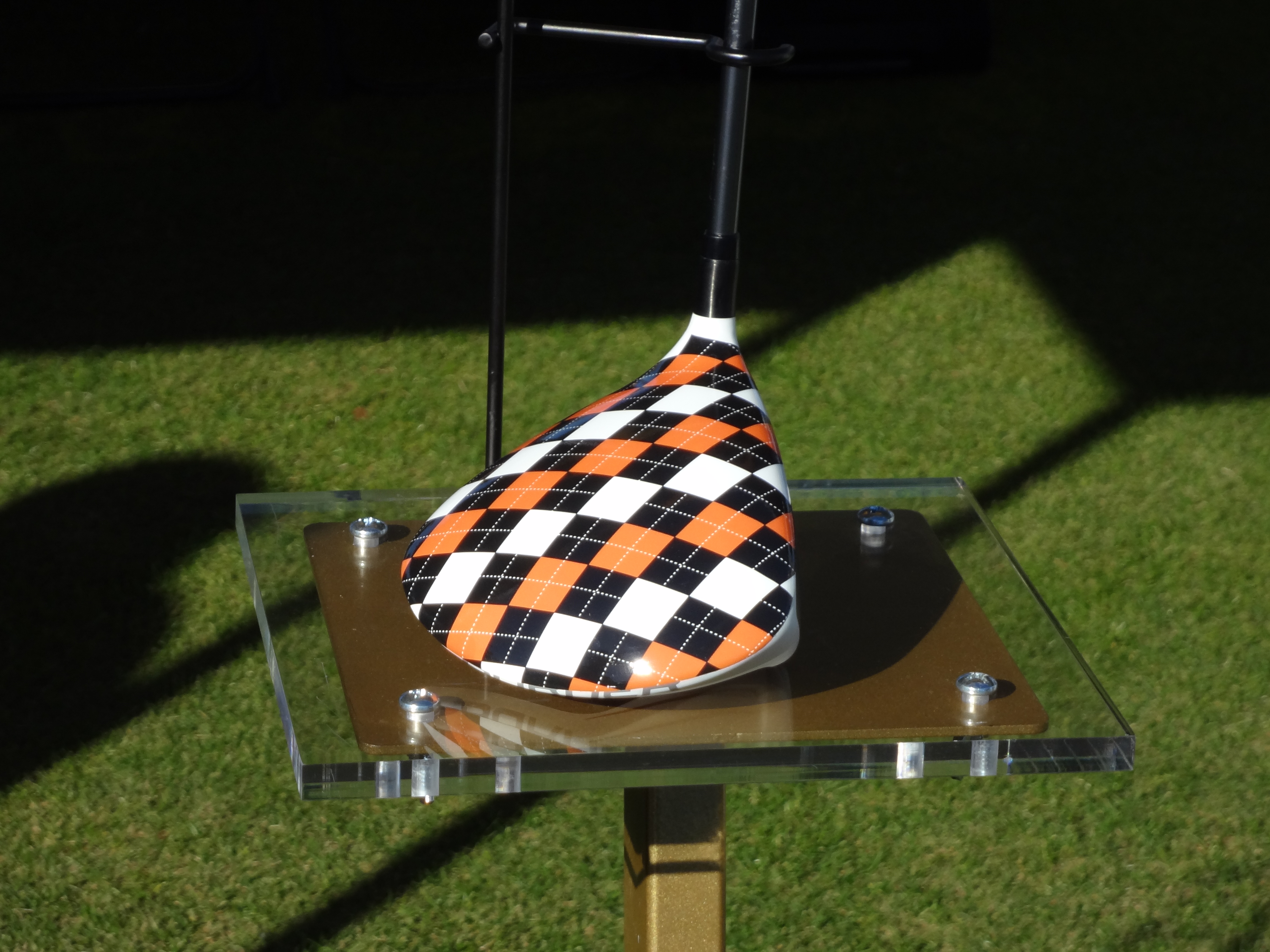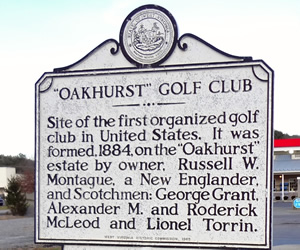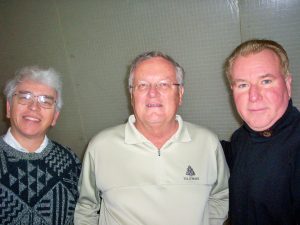Every few years, it seems, somebody in Butler National Golf Club’s membership suggests that the all-male facility may be willing to accept women as members, thereby making it possible for big-time golf to be played in Oak Brook again.
Citing “industry sources,’’ that same old story surfaced again in a Chicago newspaper this week. Such reports give the club, off the world golf stage since the Western Open moved to Cog Hill in 1991, a publicity boost, but that’s about all.
Until Butler’s membership takes a vote to allow women — and the measure passes — there’s no reason to give such reports any validity. And such a vote isn’t even in the works.
While Butler president Ed Gustafson has taken a no-comment stance on the latest report, a long-time Butler staff member who wished to remain anonymous told me “This is just another story that has come up before. It’s nothing new. It’s pure speculation. There’s not a story from our side.’’
And that well-placed staffer didn’t think such a vote would even be considered “for a long, long time.’’
Some historical perspective is in order here.
Butler’s opening in the early 1970s was big news. The super-tough layout provided a “permanent’’ home for the PGA Tour’s oldest tournament. The WGA moved the Western there in 1974, a year too early based on the course’s condition at the time. But the tourney was staged there for 17 years and produced some exciting championships.
No doubt some Butler members miss those good old days. Hosting the Western put their club in the spotlight. But, when PGA Tour and U.S. Golf Assn. then objected to its exclusionary membership policies, Butler gave up the Western after its 1990 staging and put itself out of contention for even bigger, more lucrative, events like the U.S. Open, PGA Championship and Ryder Cup matches.
Cog Hill, in Lemont, became the Western Open site in 1991. Now Cog’s future as as a tournament site is in doubt, perhaps leading to the speculation that Butler might be in the running with the Western Golf Assn. to host the Western’s successor, the BMW Championship.
Cog Hill’s recent $5 million renovation wasn’t well-received by PGA Tour players, a group of whom rated the layout 46th of 52 tournament venues in a recent GolfWorld magazine poll. The BMW will be played at Crooked Stick near Indianapolis this year and might return to the Chicago area in 2013, but it’s highly unlikely the site would be Butler even then.
“If the membership policy changes the BMW Championship would be interested, because it’s a good golf course,’’ said Vince Pellegrino, the BMW tournament director. “But we’ve had no discussions with them and haven’t heard anything.’’
He called the recent report of a membership change of heart “the same thing we’ve heard before.’’
The BMW’s future, though, seems in limbo. Immediately after Cog Hill hosted the 2011 championship in September Pellegrino said an announcement of the site for the 2013 tourney would be made in a matter of weeks.
Four months have past, and Pellegrino said an announcement will have to wait at least another three-four weeks. Conway Farms, in Lake Forest, is the heavy favorite but Pellegrino said no deal has been done. Conway is the Chicago home course of Luke Donald, the world’s No. 1-ranked player.
Killing off the possibility of Chicago returning as an annual PGA Tour site, the WGA slated the 2014 BMW for Cherry Hills in Denver and a return to Chicago in 2015 is not sure thing, either. Harding Park, in San Francisco, is reportedly in the running for the tourney that year.
As for Butler’s return to the big-time, the membership issue is paramount. The club, though, did bring in a top architect, Tom Fazio, to renovate the course in 2005 and two prominent touring pros, Jeff Sluman and Mark Wilson, practice there.
Author: lenz
PGA MERCHANDISE SHOW: Nicklaus says golf is “at a crossroads”
ORLANDO, FL. — The biggest show in golf started on a sobering note Thursday, and it was offered by the game’s greatest player.
Jack Nicklaus gave the keynote address as the 59th PGA Merchandise Show opened its three-day run at the Orange County Convention Center. In it he voiced concerns about the game’s future, then expanded on his thoughts in a press conference with other industry leaders.
“Our game is at a crossroads,’’ Nicklaus told a standing-room-only, early-morning gathering of show-goers, who are expected to number over 42,000 before the show ends on Saturday. “We need to think outside the box if we’re to help the game we love grow.’’
No doubt the economic downturns of the past few years have adversely impacted the golf industry, just has they have impacted virtually every other business. But in golf it goes deeper than economics.
“We’ve lost 23 percent of the women and 36 percent of the kids in the game since 2006,’’ said Nicklaus. “Those are not good stats.’’
Even growing up a Nicklaus didn’t help boost golf’s numbers. The Golden Bear, winner of a record 18 major championships, plays once a month now. His wife Barbara plays less than that. So do 21 of their 22 grandchildren. Only one grandchild, a 9-year old boy, is considered a regular player.
Nicklaus cites the time demands that golf requires for the dropoff in popularity.
“Other sports are grabbing attention time from our kids,’’ he said. “Their parents don’t have time to play golf, and the kids aren’t being introduced to it.’’
But, at least, the PGA of America has come up with a possible solution, called the PGA Certified Professional Program 2.0, as the centerpiece for advanced training and education curriculum for those in the industry — not just club professionals. Nicklaus calls it “the most comprehensive and complete, well-thought out program’’ to get golf growing again.
While PGA executive director Joe Steranka calls the initiative “an alliance of the industry,’’ it represents a multi-million dollar investment by the PGA to educate its members on how to grow the game.
Chicago is one of nine targeted markets where the all-digital 2.0 initiative will be put in place first. Four of the markets have regional managers selected, and Chicago’s is Frank Chieppa. He’s a former officer in the Illinois PGA Section and the head professional at Randall Oaks in Dundee Twp. for 15 seasons. He left Randall Oaks last year for a head job at The Legends in Franklin, Ind., but is returning to Chicago to spearhead the golf growth effort here.
While specifics on how the program will work affect present and perhpas future players was limited, the announcement of the 2.0 initiative was well-received by the turnout that included over 1,000 vendors, 30 more than last year. The closed-to-the-public event takes up about one million square feet of showroom floorspace.
PGA MERCHANDISE SHOW: Demo Day delights
ORLANDO, FL. — Getting to the Demo Day kickoff of the 59th PGA Merchandise Show wasn’t easy. There were traffic jams and long lines at the check-in points — even when the gates opened at the Orange County National Golf Center.

The Demo Day was closed to the public and required a 45-minute shuttle bus ride from the Orange County Convention Center, the site of the last three days of the massive show — the biggest in golf. The PGA expected about 7,000 visitors to Demo Day, and attendees figured to hit about 100,000 shots on the 100-station range. Wednesday’s turnout, though, certainly exceeded that.
One veteran PGA staffer, sitting with me on the early-morning bus ride, called the scene “amazing….bigger than I ever dreamed of.’’ And things got more hectic as the sunny day worn on, but there was plenty to see.
Some bordered on the ridiculous. One company was offering a variety of multi-colored mouthwear. I didn’t realize your teeth needed protection in golf, did you?
The bright colors, though, were eye-catching, and they weren’t limited to the mouthwear. ClubCrown by Vive showed off some dazzling covers that can be installed on the heads of drivers in 7-15 minutes. If your clubhead shows signs of wear or — if you just want it to look distinctive — try one of these covers. Anther company had club shafts in bright orange and lime green, and orange grips were available through another manufacturer. I also found a table-full of all-red golf shoes.
The colors added to the festive atmosphere of the Demo Day, the ideal place for new companies to make a bang with their products. That’s really what that event is all about, though all the major manufacturers were out in full force to encourage the testing of their equipment on the big, circular range.
Two products stuck out, as far as I was concerned. Ernst Sports displayed its ES12 portable launch monitor that provides video swing analysis, weather data, scoring details and even input for club selection. That handy little gadget will sell for about $225 when it hits the stores.
I was most interested, however, in the Heavy Putter put out by Boccieri Golf. Anything goes with putters, it seems, but the mindset in the production of this one is intriguing. I tested one of the many versions, and it was notably heavier than any putter I’d ever tried.
“Most putters are 290 to 310 grams,’’ said Steve Boccieri, inventor of this line of blades. “Our putters are up to 550 grams. That’s the heaviest we can make a putter head. If it goes beyond that, it’s too cumbersome.’’
The extra weight isn’t all in the head, either. It’s added to the handle of the club, as well, and Boccieri putters come in both standard and belly versions. The latter can range in length from 40 to 46 inches.
“What’s unique about us is that every putter we make can be made into a belly putter, because belly putters always have heavier heads,’’ Boccieri said. “Other manufacturers here — Odyssey, Ping — have two styles of belly putters, two head designs. I have 30 head designs because any of my head designs can be converted to a belly putter. Every head I make is heavier.’’
Boccieri has been making putters for eight years, and belly models were among his original ones.
“There was a trend where belly putters got hot, then they went very cold,” said Boccieri. “Some stores called their inventory of them poison, because they wouldn’t sell.’’
Well, belly putters are selling now, though — in my book — their long-range future remains uncertain. And, there are plenty of other new golf products coming out that will challenge for attention.
PGA MERCHANDISE SHOW PREVIEW: Wilson is going belly-up
ORLANDO, FL. — Chicago-based Wilson Sporting Goods may have the richest heritage in golf. More major championships have been won by players using the company’s irons than any other, the majors number won now at 62 and counting.

Wilson, with a belly putter? Seriously?
Seriously!
The company’s Seriously advertising campaign, which features Padraig Harrington, Ricky Barnes and Kevi n Streelman, was well-received last year and that same theme seems appropriate to launch the belly.
“One thing for sure in golf is that trends come fast, and they’re usually product-linked,’’ said Tim Clarke, general manager of Wilson’s golf division. “Some trends are fads, but I’ve tried ours (belly putter). It does feel somewhat like cheating — and I’m not a great putter.’’
Who knows the future for the belly putter, and not just Wilson’s version? They — along with all sorts of other new equipment from a wide variety of manufacturers — will be on display at the Orange County Convention Center.
“The show is the ultimate kickoff to the season. There’s a mystique about it. People get excited,’’ said Clarke. “It’s an optimistic time.’’
Nearly 1,000 manufacturers and brands will be on hand at the show, and I’ll be joining the more than 40,000 PGA professionals and industry executives checking them out. There’ll be an outdoor Demo Day, at which new products can be tested at the Orange Country National Golf Center, on Wednesday and then show visitors will have nearly 10 miles of aisles to cover when the scene shifts for three days to the Orange County Convention Center proper. Jack Nicklaus and baseball great Ken Griffey will headline Thursday’s opening ceremonies.
As for Wilson, the company will be showing much more than the belly putter. The company will be introducing two sets of irons, a metal wood and a ball that the company calls “revolutionary’’ and Clarke says is “amazingly long.’’
Those products will soon be promoted again by Guy Johnson (not his real name), the same guy who downplayed Wilson’s equipment in such a funny way as part of last year’s ad campaign. This year “Johnson” is all on board, and even boasting that he’s playing Wilson clubs.
“Our marketing department developed it to re-introduce ourselves to the serious player,’’ said Clarke. “It focused on country club elitist players who didn’t give us that much consideration.’’
Now “Johnson’’ and the three Wilson touring pros will present a different approach. The new ad campaign has just started and the final segment, featuring Harrington, will be filmed on Feb. 13 and hit the airwaves around the Masters.
I’ll be checking out more than the Wilson equipment this week, of course. I’ll be focusing on the New Product Zones, always the most popular areas of the show, as well as the Inventors’ Spotlight. My reports will be made via both websites and podcasts throughout the show.
MY OAKHURST VISIT: America’s first course provides a mystery

WHITE SULPHUR SPRINGS, W.Va. — Any devoted golf aficionado should want to visit Oakhurst Links, long billed as the first golf club in the United States. A book — “Oakhurst: The Birth and Rebirth of America’s First Golf Course’’ (by Paula DiPerna and Vikki Keller, Walker and Company, 2002) — was even written about this nine-holer, which dates to 1884. That’s well before the country’s first 18-holer, Wheaton’s Chicago Golf Club (1892).
So, en route to a winter in Florida, a side trip was planned to this little known town, best known for being the site of the famous Greenbrier Resort.
I’d read Oakhurst’s history book, which detailed how Russell Montague had built a course on his estate and enjoyed it with some neighbors before converting it into a horse farm. Golf was apparently played on the property until 1912. There is no doubt about that.
Much later Sam Snead, who grew up nearby, was photographed hitting balls on the overgrown property. As ownership of the property changed, Snead urged Oakhurst’s reconstruction and architect Bob Cupp took on the project. Using any resources he could get, Cupp revived Oakhurst as a 2,235-yard layout that was re-opened in 1994. Rounds were played with hickory-shafted clubs and balls similar to those of the 1880s. Players dressed in attire from that era, as well, and a national hickory championship tournament had been played there.
Sounds like an interesting place to visit, right? Well, I would call my trek there weird more than interesting. An Internet search of Oakhurst Links proved sketchy. The course had financial difficulties, changed owners, was closed in 2008 but did apparently operate in 2010.
Phone calls, made to Oakhurst over several days, were more puzzling. All you got was a voicemail that said the facility was open from 8 a.m. to 4 p.m. Tuesday through Sunday. You were invited to leave a message for a callback, but mine went unanswered.
Nonetheless, this trip would go on — and with it the mystery deepened. With the presence of the nearby Greenbrier, you’d think someone in the little town of White Sulphur Springs would know something — anything! –about this historic location about five miles from the big resort. I couldn’t find any that did.
First stop was at a gas station just off the main highway. Is Oakhurst still there, I asked an attendant after telling her about the unanswered phone calls.
“As far as I know it is, ‘’ she said. “Maybe it’s seasonal (in operation).’’
That was a distinct possibility, since the trip came in late December. Still, why not have a peek at this place while you’re in the neighborhood?
Our GPS System led us to Oakhurst, sort of. We turned down Montague Road, a country trail somewhat off the beaten path, but the journey ended abruptly, with a road closure. Construction on a bridge kept us from going further, though the GPS said we were nine-tenths of a mile from our destination. So near, and yet so far.

On the way back to the main road I spotted a historic marker at a nearby intersection (the only indication that Oakhurst indeed did still exist). It was located near another gas station.
From there our trip went a couple miles back to the Greenbrier, both for sustenance and more information. The guard at the gate knew of an old golf course five miles away in the hills, but that was about all he knew. A visit to Greenbrier’s Sam Snead Pub for dinner didn’t produce much more information. The first waitress, saying she’d been on the job only three months, hadn’t heard of Oakhurst. She brought over another waitress, who had lived in the area a bit longer. She didn’t know much, either, but called over a waiter who described himself as a regular at area courses.
“I’ve never played (Oakhurst),’’ he said, “but I know it’s there.’’ But he didn’t know if it was still in operation, and hadn’t even noticed the historic marker on the road leading to the course.
All the people we talked to were extremely friendly — especially those at the Greenbrier — and they tried to be helpful. Still no one — even those living within the little town — knew much about America’s the first golf course. That seems a shame, given the historical significance of the place.
Advised of the bridge construction, the waiter thought another side road might get us to the location the following day, but that narrow road looked precarious the next morning — especially with rain pelting down at a good rate. So, my Oakhurst adventure wasn’t fruitful — but it did produce something to talk about within my golf circles.
After our visit we received an inkling of what had been happening at the 30-acre property. The Links, as well as some of its memorabilia, were put on the auction block. The owner, Lewis Keller, was 89 years old and taking care of the property had become too difficult. Keller was willing to accept the best offer and finally retire to Lynchburg, Va., to live near his daughter Vikki. In November, 2012, the course was bought by Jim Justice, the Greenbrier owner. Though the price wasn’t disclosed Keller said the amount satisfied a $700,000 bank lien on the property.
THIS `Big Three’ is ready for action
This “Big Three” may not be anything like Arnold Palmer, Jack Nicklaus and Gary Player, but we feel we can make a positive impact on golf — especially in the Chicago area.

We are three golf reporters with a combined 102 years of experience covering the sport we love. We’re kicking off 2012 by announcing an affiliation agreement in which we’ll spotlight the lead stories on each other’s websites. We see this as a means of staying ahead of the rapidly changing media changes within the golf industry.
While there will inevitably some overlap in the subjects we cover, our websites are each a bit different. Rory Spears (www.golfersongolf.com), the best golfer in our trio, is a rater for GolfWeek magazine. He’s worked in a variety of positions during his 27 years in the golf industry. In addition to writing The Gog Blog, he is co-host of Golfers on Golf which is in its 10 season as Chicago’s longest-running golf radio show.
Tim Cronin, for 33 years the golf writer and columnist for the Daily Southtown/Star, has established himself as the premier Chicago golf historian. He’s written four books on the histories of Chicago clubs. He’ll be offering his unique perspectives on the golf news of the day on his website, www.illinoisgolfer.net.
My lenziehmongolf.com will continue to focus on golf travel destinations and tournament reports. If one of us doesn’t provide what you’re looking for, chances are good that one of the other two will.
The affiliations with Rory and Tim means that Len Ziehm on Golf is now connected with three other websites. We earlier reached agreement with Cheryl Justak’s “Golf Now! Chicago,’’ the premier travel destination guide. My travel stories will run on her www.golfnowchicago.com.
JUST MY OPINION: Luke Donald has topped them all
On Sunday Luke Donald finished third in the Dubai World Championship and became the first golfer to win money titles on both the U.S. and European PIA Tours while holding membership in both.
This is something for the history books, and the feat hasn’t gotten the attention it should have from the sports media both in and away from Chicago. When you factor in what went on both on and off the course I believe Donald’s 2011 topped the accomplishments of all athletes, in all sports.
First he rises to No. 1 in the world, then pads his lead. When Webb Simpson threatened to claim the money title on the PGA Tour Donald added a late-season tournament and won it. When Rory McIlroy had a chance (however slim) to get the European money title Donald responded with a solid third-place showing with all that historical significance on the line.
He may still be without a major championship, but Luke was consistently good and at his best when the going was toughest.
All that success on the course came with two life-changing developments off the course — the birth of a daughter and the death of his father. It wasn’t so long ago, either, that Donald made a difficult decision — parting company with his brother as his caddie — that also factored into his extraordinary 2011 season.
Personally I feel an attachment to the Donald saga because I’ve seen a lot of it develop from up close. He was the leader of a Northwestern golf team that brought the Wildcats national prominence. I’ll also recall his victory in the Chicago Open at Beverly Country Club in the midst of the 9/11 tragedy. Luke was just an amateur playing against regional pros then, and I’m not sure the event should even have been held, given the circumstances facing the entire country at the time, but Donald emerged the champion and gave an early hint about where his golf career was headed.
Not long after that I had a lengthy sitdown with Luke and his brother in their Evanston apartment for a golf magazine profile on golfers with promise. Luke certainly fulfilled his, and remained an extraordinarily strong supporter of the NU program while doing it.
In the near future Donald will like learn if he gets his wish from the Western Golf Assn. He has made it known that he’d like the BMW Championship be moved to Conway Farms, his home course in Chicago, in 2013. I’m not so sure he’ll get his wish on that one. The WGA has been mum on that subject, though Conway would make a viable venue for that tournament.
Tourney sites are intriguing for CDGA, WGA
The Chicago District Golf Assn. and Western Golf Assn. have made major announcements in their tournament sites just a few days apart.
In announcing its tournament slate for 2012 the CDGA revealed that Cantigny, the 27-hole public layout in Wheaton, will host the concluding four-day match play portion of the CDGA Amateur. That’s significant because the finals haven’t been held on a public course since 1991. Last year the prestigious tourney wrapped up at Medinah, with the final on that club’s No. 3 course that will host the 2012 Ryder Cup matches.
Kokopelli, in Marion, will host the CDGA’s biggest tourney of the season — the 82nd Illinois State Amateur. That site marks a milestone as well, since Kokopelli will be the southern-most course to ever host the tourney. It’s about 25 miles further south than Rend Lake, in Whittington — the site of the 1998 championship.
“This is only the second time ever that the Illinois State Amateur has ventured to the southern portion of the state, and we couldn’t have found a better course,’’ said Nick Scillia, the CDGA manager of competitions and rules.
Rend Lake was the host venue when current PGA Tour player D.A. Points won the second of his three Illinois Am titles.
The WGA made a schedule switch for the 2013 season, dropping Olympia Fields as the site of the Western Amateur and moving the event to The Alotian Club in Arkansas.
After ending a 28-year run at Point O’Woods in Benton Harbor, MIch., the WGA had planned to base the tourney in the Chicago area and the first three tourneys in that run — Conway Farms in 2009, Skokie in 2010 and North Shore in 2011 — were successful. The year’s Western Am will be at Exmoor, a tradition-rich private club in Highland Park.
The Chicago run, though, will end with the move to The Alotian Club, a Tom Fazio design that is owned by Augusta National member Warren Stephens. Alotian Club has been well-received since its opening in 2004 and its two Evans Scholars, Joe and Kevin Evans, are Northwestern students.
The Chicago run is scheduled to resume in 2014 at Beverly and is targeted for Rich Harvest Farms in 2015 and Knollwood in 2016.
Olympia Fields has been Chicago’s busiest tournament site in recent years, the highlight coming when it hosted the 2003 U.S. Open. Olympia also hosted the U.S. Girls Junior in 2011 and is gearing up for the U.S. Amateur in 2015, which will highlight the club’s centennial celebration.
Vince Pellegrino, tournament director for the WGA, said the decision to end the Chicago run came after the invitation from The Alotian Club.
“We discussed a possible change with Olympia Fields officials, and we then made a joint decision to move the championship,’’ said Pellegrino. “We appreciate the club’s flexibility in agreeing to the move, which will allow us to broaden our reach and mission to other markets, particularly to a venue that also has been very supportive of our Evans Scholars program.’’
With the WGA still without a site for its biggest event, the BMW Championship, in 2013, there was speculation that Olympia Fields might host that event, but that isn’t expected to happen now. The WGA is focusing on courses in the northern suburbs for that event, though a return to Cog Hill in Lemont is still a possibility.
Introducing wire-grass at Pinehurst No. 2
 PINEHURST, N.C. — My frequent golf travels have led me to introduce you to a term you’re certain to hear more about in the next few months and years. It’s called wire-grass, the key ingredient in the recent renovation of North Carolina’s Pinehurst No. 2 — one of the world’s most famous courses, as well as one of my all-time favorites.
PINEHURST, N.C. — My frequent golf travels have led me to introduce you to a term you’re certain to hear more about in the next few months and years. It’s called wire-grass, the key ingredient in the recent renovation of North Carolina’s Pinehurst No. 2 — one of the world’s most famous courses, as well as one of my all-time favorites.
Pinehurst is certainly no secret. It’s been welcoming guests since 1895 and is America’s largest golf resort with its eight courses. The insertion of wire-grass on its famed No. 2 course, though, is something new and significant. While the topic of wire-grass hasn’t been talked about much yet, it will be. The U.S. Golf Assn., in an unprecedented move, has scheduled for the U.S. Open and U.S. Women’s Open at Pinehurst in 2014. By then wire-grass will be a well-known golf term.
Wire-grass doesn’t look all that great, but that’s what Donald Ross — the famed architect of the early 1900s — worked with in creating his layout at Pinehurst No. 2.
According to Don Sweeting, one of PInehurst’s vice presidents and my recent tour guide over the course, wire-grass is “a clump of grass that grows to four-six inches tall and has plumes on it and is very wispy….I provides an obstacle to golfers to play through it — but it’s very easy to find your ball.’’
Sweeting tells me that wire-grass is very indigenous to the sandhills of North Carolina. The fact that it was allowed to grow at Pinehurst No. 2 certainly changed the look of the course that hosted U.S. Opens in 1999 and 2005. I covered both. For those events the rough was bermuda, just like the fairways, only longer.
Pinehurst had a pristine look then. Now it’s more traditional and the rough is more unpredictable for golfers. Maybe some golfers won’t like the new look, but I did because Ross is one of the all-time great architects whose work has withstood the tests of time. He lived off the No. 3 hole at Pinehurst No. 2 before his death in 1948.
“We felt we had moved away from the Donald Ross era,’’ said Sweeting. “Pinehurst is known for its history, and you don’t want to go away from your history; you want to preserve it. We’ve normally done an excellent job of that, but we got away from it in the 1970s and 1980s. The golf world was going to the pristine and perfect look then, but that wasn’t what Donald Ross was all about.’’
Ryder Cup enthusiasm builds
Sure, Medinah’s week to host the 39th Ryder Cup is still a year away. Still, the task of getting ready for the biggest team event in golf is a major undertaking.
Michael Belot, the tournament director, and five staffers have been working feverishly from Medinah and report making great progress. Belot should know, becuase he is in his 10th year working for the PGA of America and was the tournament director for the 2006 PGA Championship, which was also held at Medinah, as well as the 2009 PGA at Hazeltine in Minnesota.
The Ryder Cup, though, is a different animal.
“With all the rich history that the club has, this will stand out as Medinah’s crowned jewel,’’ Belot said. “It’ll be the biggest golf event ever in Illinois.’’
Medinah hosted U.S. Opens in 1949, 1975 and 1990, PGA Championships in 1999 and 2006 and the U.S. Senior Open in 1988. Those were big events — but the battle between the U.S. and Europe on Sept. 25-30, 2012, will be notably bigger.
“Chicago is known for big events,’’ said Belot, “and this market has embraced this Ryder Cup.’’
Here is some evidence of that:
As of this printing 60 corporate hospitality chalets, costing between $235,00 and $500,000, have been sold.
“We started out offering 59 chalets, so now we’re adding chalets that we hadn’t expected to add,’’ said Belot. “We’ve added a village we had not expected to add, and we’re exploring whether to add more.’’
While that sales process is going on Belot’s staffers have been bidding out what’s needed for the opening and closing ceremonies as well as the Ryder Cup gala, which will be held the Wednesday of tournament week.
Public ticket sales to the competition will begin at 8 a.m. on June 20 — the day after the U.S. Open concludes at Congressional. That’s when people can sign up for the random draw for tickets. That’ signup will continue for about two months. Crowds will be limited to about 25,000 per day. (For more details on the ticket situation check out the rydercup.com website).
Tickets will range from $35 for a daily ticket to $680 for the premium weekly offering. All youngsters 17 and under will get complimentary admission on the three practice days if they’re accompanied by a ticketed adult. Such a practice has never been done at a Ryder Cup.
About 3,500 volunteers will be needed to stage the competition, and Belot said about 5,000 have already called in to request assignments. Medinah members will have first crack at the voluntary positions, then what remains will be offered to the general public on July 11. A volunteer package costs $235, which includes a tournament badge, uniforms, meals, programs and other perks.
Already there’s been some notable preliminary events, and more will be forthcoming as the next Ryder Cup closes in. Biggest so far was the press conference announcing Davis Love III as U.S. captain on Jan. 20. Love and European captain Jose Maria Olazabal will have a joint press event at Medinah on Sept. 26, as the one-year to Ryder week countdown begins.
As for Medinah members, they were already treated to the unveiling of a Leroy Neiman painting that the famed artist created to commemorate this Ryder Cup.
Meanwhile, Medinah’s No. 3 course that will be used for the matches will continue to mature after its reopening last year. As part of a major renovation famed architect Rees Jones designed a new 15th hole, adding a pond to create a driveable par-4. That was the major change, but all of the tees and greens were regrassed to conform to U.S. Golf Association specifications. There won’t be any big events on No. 3 this summer to allow the latest renovation to settle in.
“This will be the first time in a long time that no bulldozers are on the golf course, and that’s a good thing,’’ said Don Larson, Medinah’s chairman for the Ryder Cup.
Larson has one concern that he wants to pass on.
“Beware of pirate hospitality groups that are billing themselves as official,’’ said Larson. “Already people are on eBay selling tickets.’’

